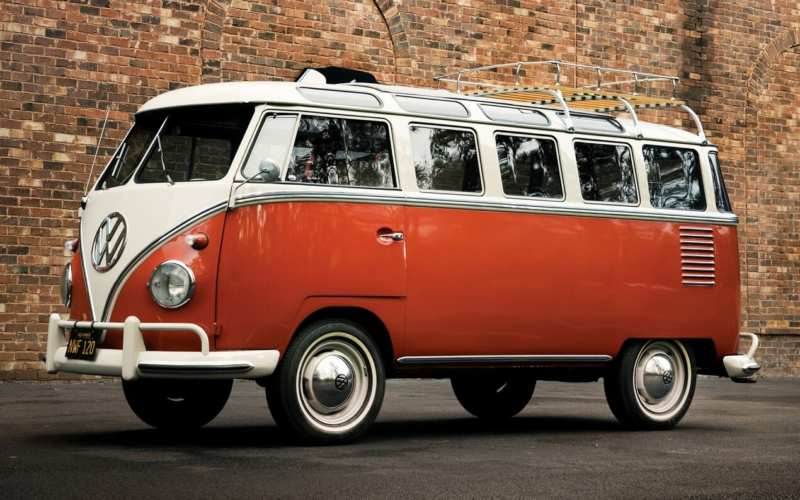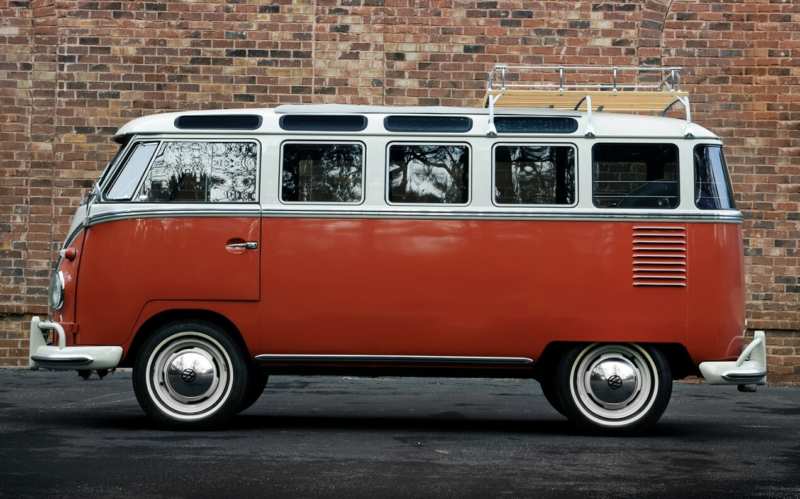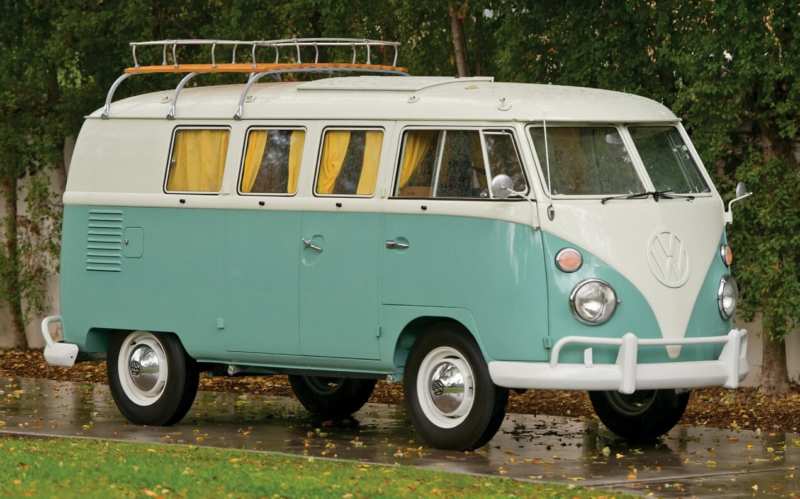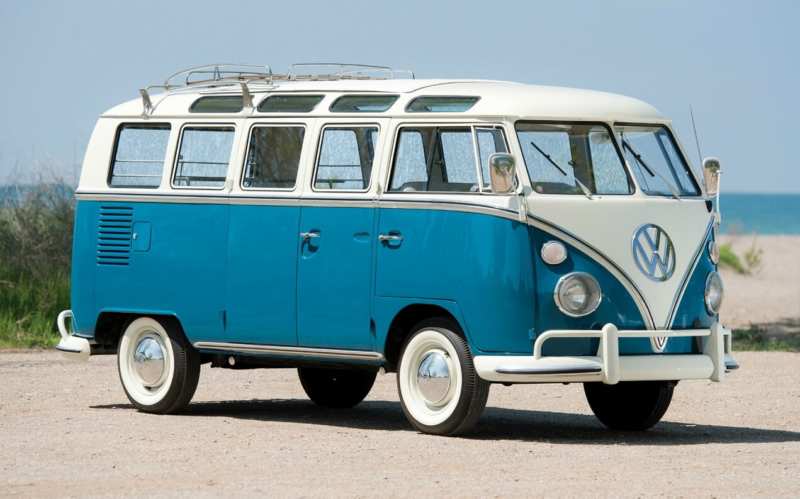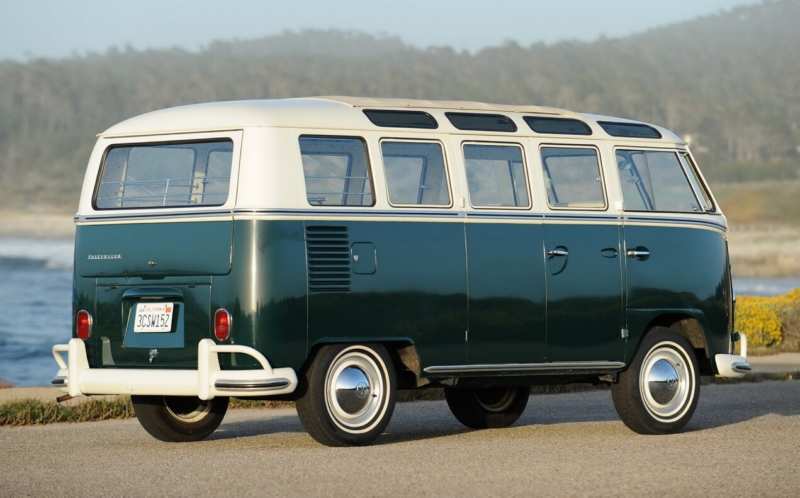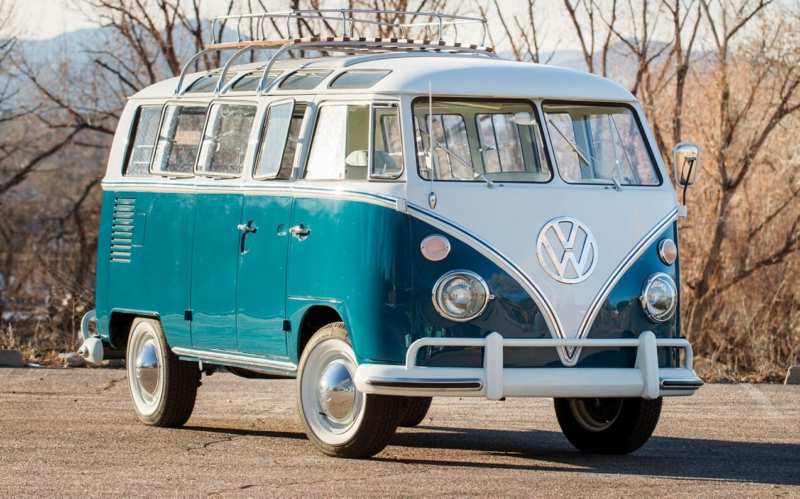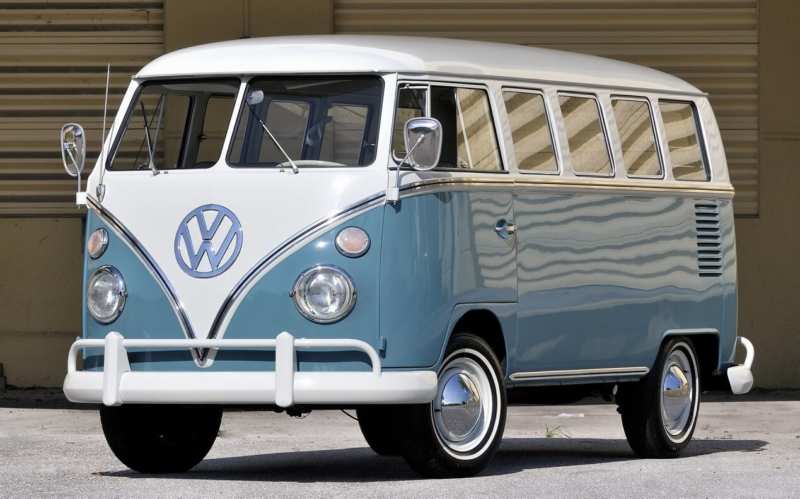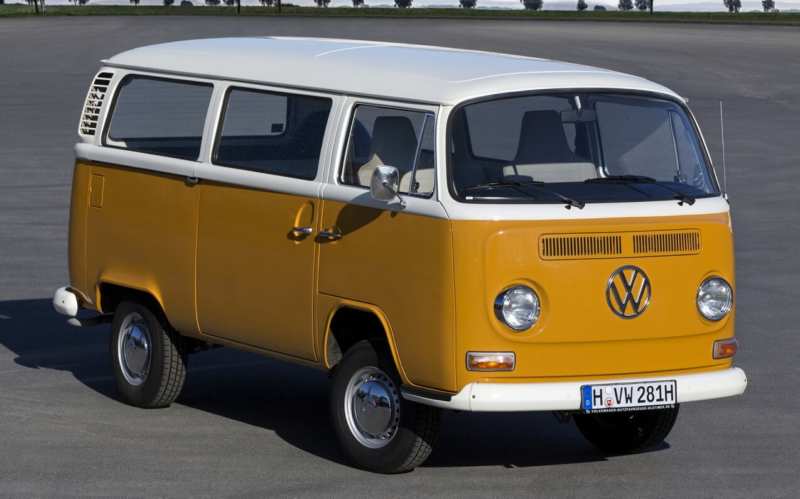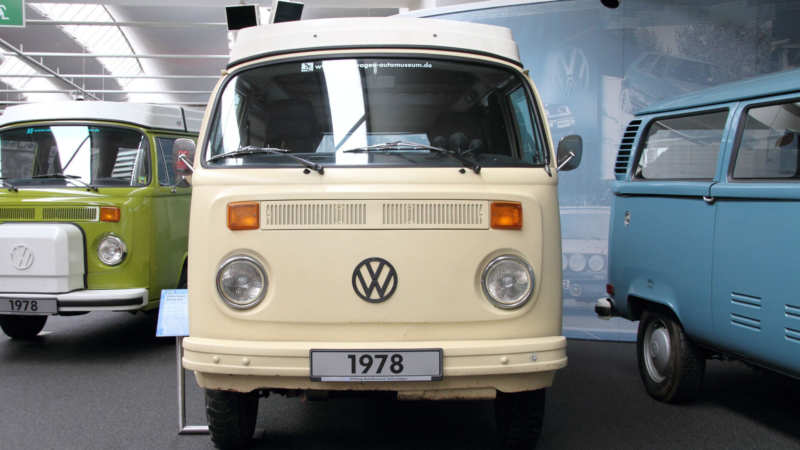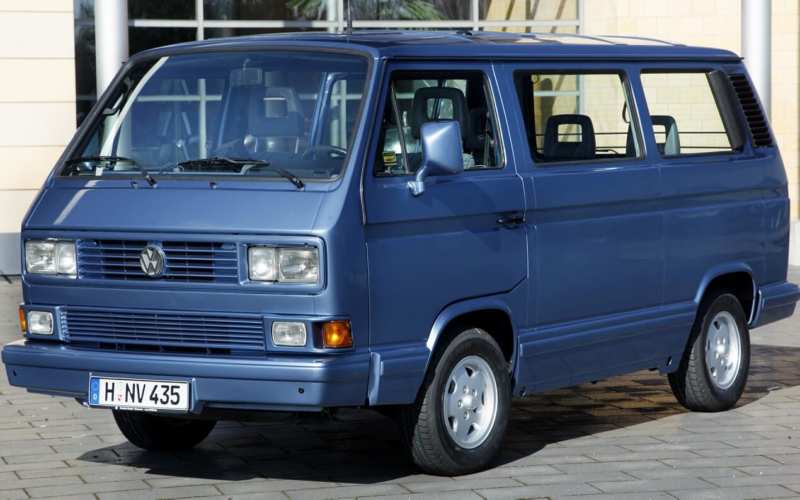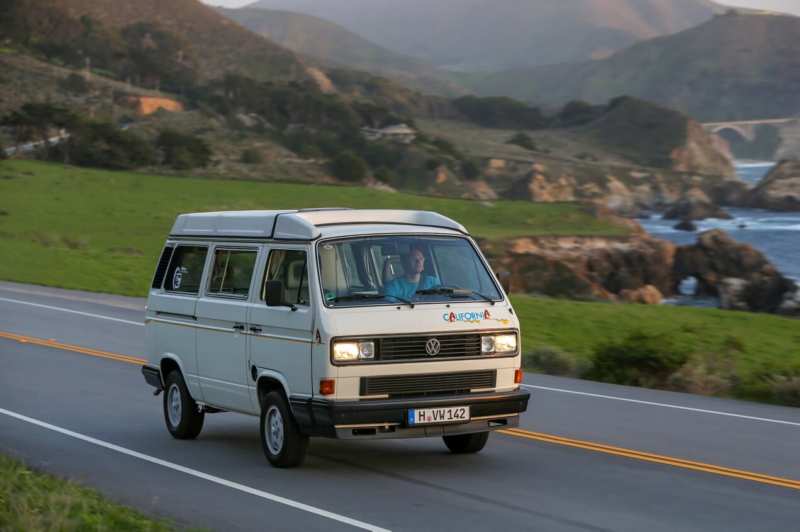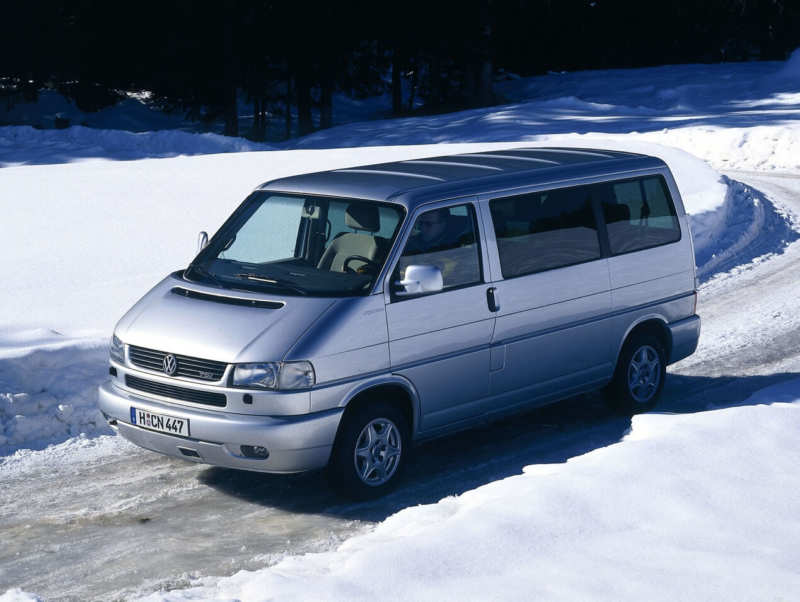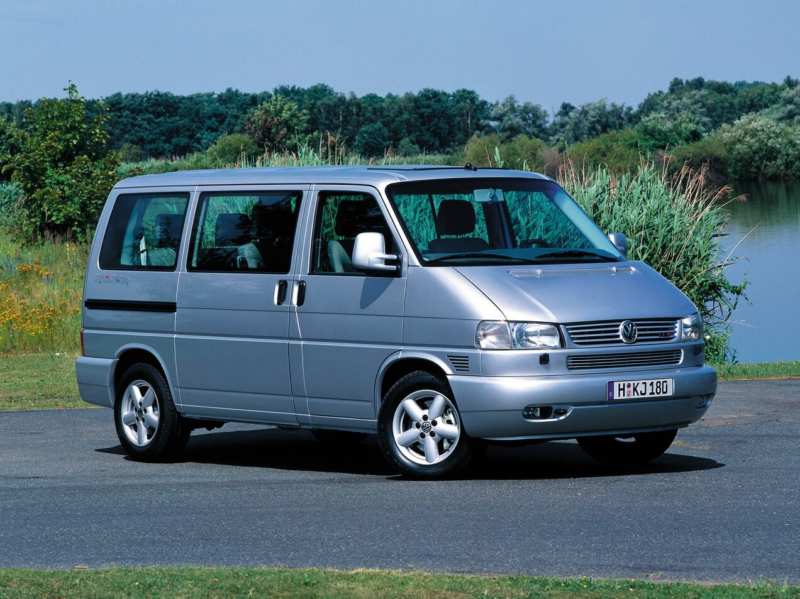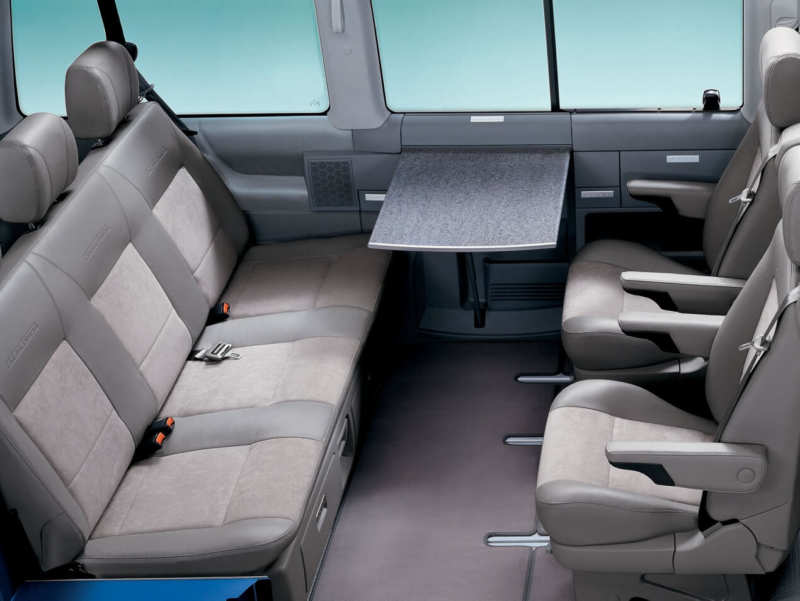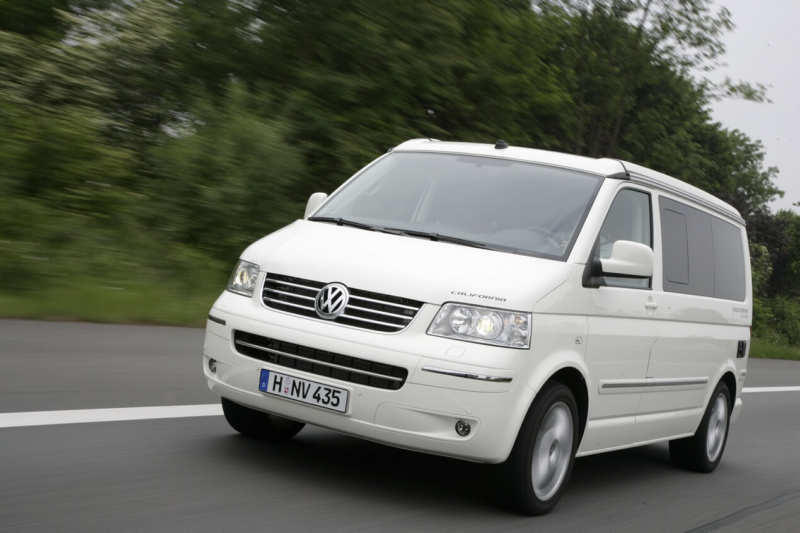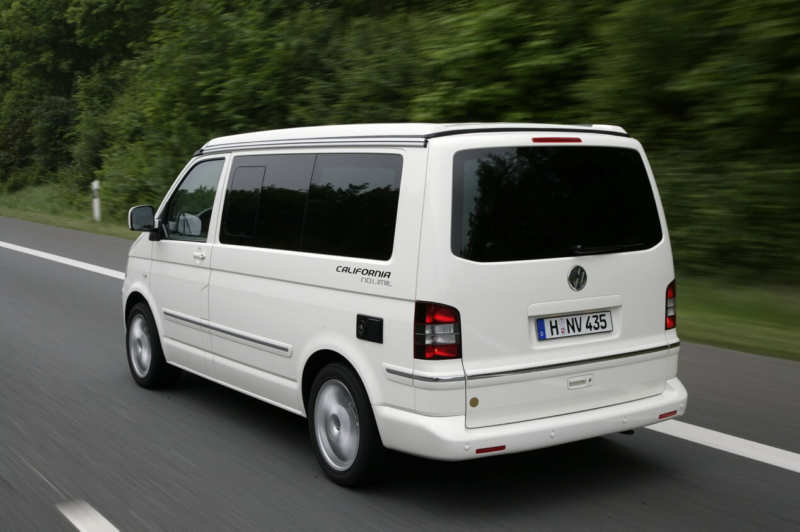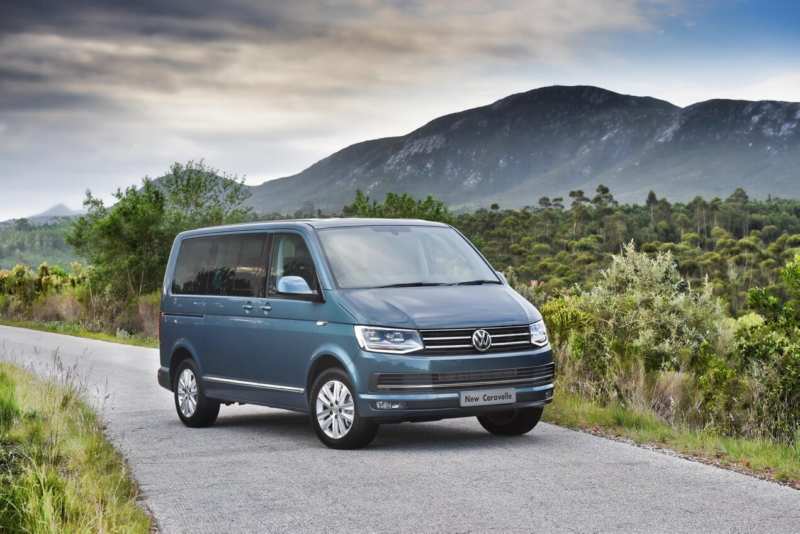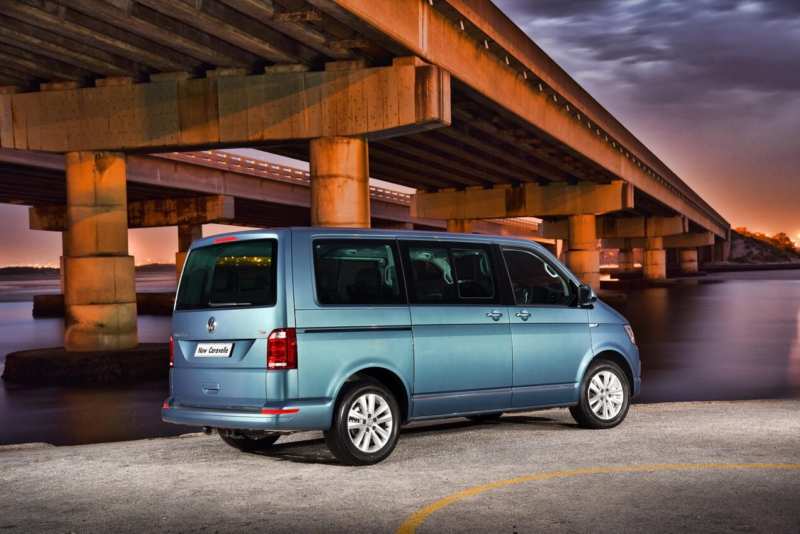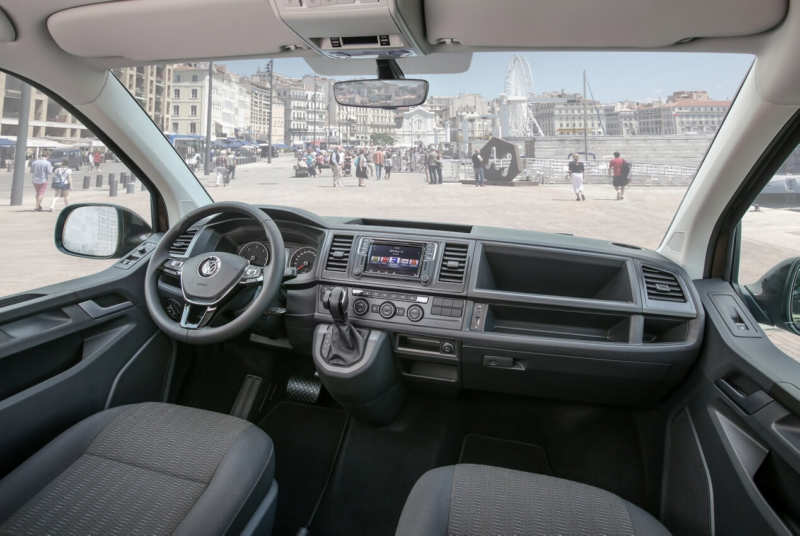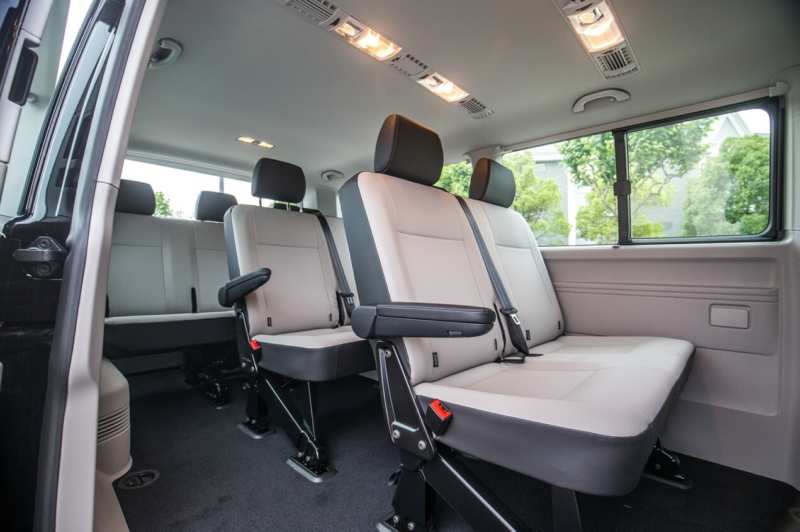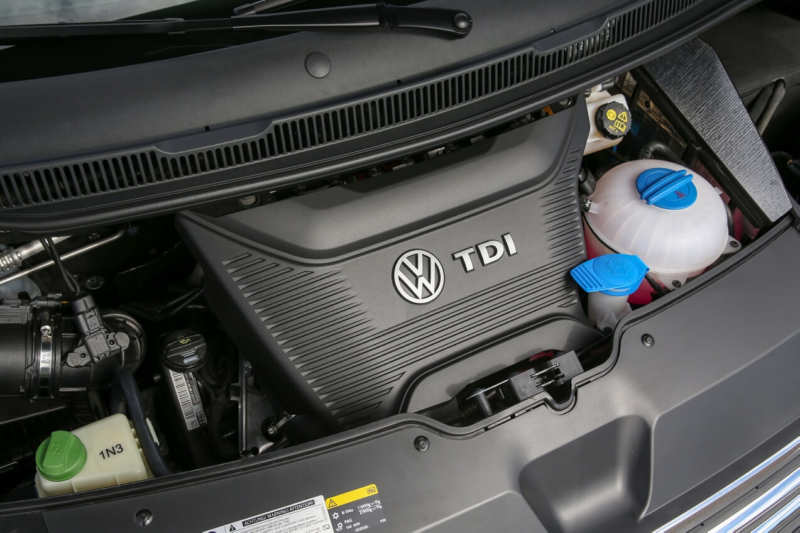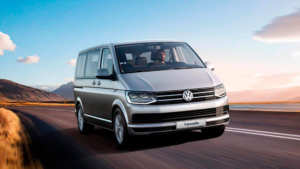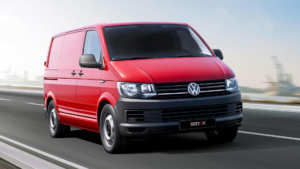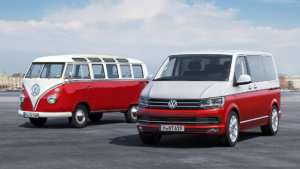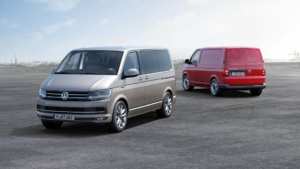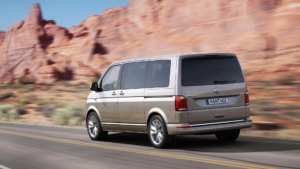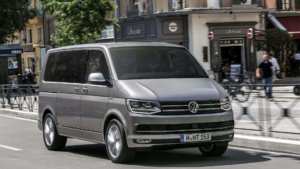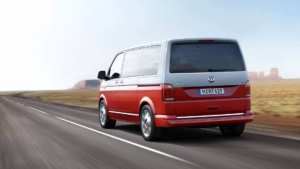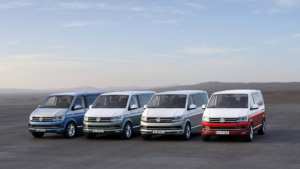Volkswagen Transporter
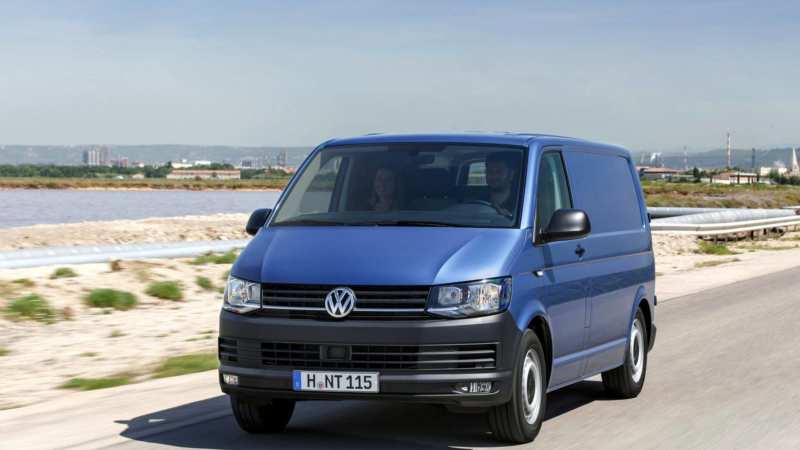
Volkswagen Transporter is one of the most reliable machines in the minivan niche. The car is considered a follower of the car Kafer, which was previously produced by a German company. With the help of thought-out design and unique technical characteristics Volkswagen Transporter has gained extraordinary popularity around the world.
This car has undergone quite modest changes and almost did not succumb to the influence of time. The Volkswagen Transporter family is the largest representative of the VW. The vehicle is offered in modifications Multivan, California and Caravelle. The whole model range is Volkswagen.
- Car history
- Volkswagen Transporter Т1 (1950-1975)
- Volkswagen Transporter Т2 (1967-1979)
- Volkswagen Transporter Т3 (1979-1992)
- Volkswagen Transporter Т4 (1990-2003)
- Volkswagen Transporter Т5 (2006-2009)
- Volkswagen Transporter Т6
- Exterior
- Interior
- Specifications
- Powertrain
- Transmission
- Suspension
- Brake system
- Price and equipment
- Crash test
- Reviews from the owners
- The pros and cons
- Summing up
- Volkswagen Transporter T6 photo
- Test drive
- Video overview
Car history
The Dutch importer VW Ben Pon was responsible for the idea of designing the vehicle. On April 23, 1947, he noticed at the Volkswagen plant in Wolfsburg a car platform built by workers on the basis of the Beetle. Ben thought that during the recovery of European countries after the Second World War, the machine for transporting small things can cause great interest.
After Pon showed his own developments to the CEO (at that time he was Heinrich Nordhof), and he agreed to implement the idea of a Dutch specialist. Already by November 12, 1949, Volkswagen Transporter 1 was presented at an official press conference.
Volkswagen Transporter Т1 (1950-1975)
The debut minivan family was launched in production back in 1950. After the first months of operation, the conveyor belt produced about 60 machines every day. The company based in Wolfsburg, Germany, was responsible for the construction of the new products. The model received a gearbox from VW Beetle. However, unlike the “beetle”, the 1st Transporter replaced the frame of the central tunnel with a load-bearing body supported by a multi-link frame.
The debut minivans did not lift more than 860 kilograms of cargo, however, the luggage produced since 1964 had already been transported weighing 930 kilograms. The beetle also passed four-cylinder engines with drive on the rear wheels to the Transporter. At that time, they were developing 25 horsepower. The car is very simple, however, it was supposed to conquer the whole world. Some time later, they began to install more modern engines, which already had a capacity of 30 to 44 horses. The transmission was initially responsible for the 4-speed gearbox, but since 1959 the car was equipped with a fully synchronized gearbox.
The machine was equipped with drum brakes. The appearance could be distinguished by the massive VW logo and 2 equivalent parts of the windshield. Driver’s and passenger doors received sliding windows. In March (8th day) 1956 the production of the family car was started at the new Hanoverian enterprise Volkswagen, where the first generation was assembled until 1967, when many motorists all over the world were able to see the successor model – T2. It was surprisingly successful.
The T1 model has undergone many modifications over its 25-year life cycle. They raised the load capacity, made specialized passenger versions, equipped it with camping equipment. On the platform of the first generation VW created ambulances, police and others.
When the serial production of the Beetle “passenger car” was well adjusted, VW was able to focus the attention of its own engineering staff on the design of the 2nd model range. So the world saw the versatile small truck Tour2, where there were the main components from Beetle – the same air-cooled engine at the rear, the same suspension on all wheels and the familiar body.
Earlier we mentioned Ben Pon, who literally lit up with the idea of producing small trucks, but he wasn’t the only one. Bavarian specialist Gustav Mayer literally devoted his life to minivans.
The German began to work at the Volkswagen company in 1949. At that time, he had already gained credibility, and such that he was called a talent from God. Only a short time passed and he became the chief designer of the VW cargo department. Since then, all new modifications of the Transporter have passed through it. With his own hands, he worked hard to build a good reputation for the T range. For the first time, VW decides to test its vehicles in a wind tunnel! Based on the data obtained, certain elements of the vehicle were developed.
In the first generation of minivans the designers decided to use one of the innovative solutions: to divide the body into 3 zones – into a driver’s cab, cargo area, the volume of which was 4.6 cubic meters, and engine room. As standard, the “truck” had two-leaf doors only from one side, but, if necessary, the doors were installed on both sides. Due to the large spacing between the axles, the location of the power unit and the gearbox at the rear of the machine, the engineering staff was able to create a vehicle with an ideal weight distribution (the rear and front axles were loaded in a ratio of 1:1).
Despite this, the arrangement of the engine in copies of the first releases was not entirely successful, as it did not allow them to have a luggage compartment door. However, since 1953, the luggage compartment door has appeared, which greatly facilitated the loading and unloading of the truck. As we wrote above, the engine had an air-cooled engine. This was a significant advantage, as the drivers experienced a minimal amount of difficulties because of this – it did not freeze, did not overheat.
Partly because of this, the model has become popular in the global automotive market. T1 was successfully purchased in tropical countries, as well as in the Arctic. As an advantage, there were good dynamic indicators: with luggage, weighing about 750 kilograms, the minivan could accelerate up to 80 kilometers per hour. Fuel consumption did not exceed 9.5 liters for every 100 kilometers.
The real breakthrough in this car was the presence of a serial calorifer stove. The distance between the powertrain and the driver’s cab was considerable, and it was difficult to heat it with engine heat. Therefore, VW ordered an independent heating system for the first generation from Eberspacher.
By the end of spring 1950, a combined bus and an eight-seat passenger bus were produced. Both variations of the vehicle can be easily transformed into a passenger and cargo version by means of a removable seat design or a change in seat position.
The following year, Volkswagen began producing a passenger version of the Samba Transporter, which is gaining popularity due to its two-color body painting, removable tarpaulin roof, 9 seats for passengers, 21 windows (8 of which are installed on the roof) and a lot of chrome in the car elements. Samba’s dashboard has separate niches for the installation of radio equipment (which in the 1950s was something of an incomprehensible nature).
In the following years, the Germans managed to produce another version of the car with a flatbed. Thanks to this design it was possible to free up a considerable part of the truck for large-size cargoes. In 1959, the concern produced Transporter 1 with a loading platform, which width was 2 m. It was planned to choose among all-metal, wooden and combined designs. The long cabin allowed a group of workers from various services to travel on tasks with convenience, and the cargo platform (length 1.75 m) was used to transport tools, equipment or building materials.
Together with the release of a mass version of the Transporter on its platform developed a police and fire variation. The T1 platform made it possible to create a “house on wheels” by Westfalia. The company started producing such “houses” in 1954.
It turns out that already in those years it was possible to travel with the whole family or with friends all over the world, enjoying the beauty of the surrounding nature. The equipment of the new “home” included one table, several chairs, a bed, a wardrobe and various other household items. All the elements were firmly fixed and packaged when folded, so that they could be transported safely and without problems.
It’s nice that the set of mobile “houses” had a sunny roof, with the help of which it was possible to create a private veranda.
During 1950, the plant produced only 10 minivans, which is clearly not enough, given their popularity. Therefore, the company VW decided to increase the production of the model. In the autumn of the 54th conveyor of the Wolfsburg company produced its one hundred thousandth car.
In order to fully satisfy the market demand, the Germans expanded their own production, having built a new enterprise, but in the German city of Hannover. The plant started production of serial minibuses in 1956. Already at the newly baked enterprise in the same year it was possible to produce the 200000th minibus.
The next 5 years only added to the popularity of Bulli, so by the beginning of autumn has already released 500,000 copies. As of October 1962, the company announces the release of a millionth minivan. The first family T1 was in great demand in America – the model is often referred to the generation of Hippies. The T1 did not change significantly in terms of appearance until the summer of 1967.
Volkswagen Transporter Т2 (1967-1979)
At the end of 1967, the 2nd family of Volkswagen Transporter arrived. At that time, about 1,800,000 copies left the VW companies. The T2 minibus was developed by the designer Gustav Mayer, who saved the platform from TOUR2 Bulli, but decided to complement it with a lot of cardinal changes.
T2 “grew” in size, became more reliable, durable and attractive. It is important that the driving characteristics together with the ease of operation were able to step on the heels of the characteristics of cars. This result was due to the competent selection of front wheels and excellent axle weights.
Speaking of looks, it’s modern. Safety has also been improved – instead of a 2-section windshield, panoramic glass has been installed. The power unit was left in the rear of the car, as well as the drive. Meyer offered for the second generation a list of opposition power units, the working volume of which was 1.6-2.0 liters (47-70 “horses”). The truck was now equipped with a reinforced rear suspension and dual-circuit braking system.
The new generation minivan could accelerate to more than 100 kilometers per hour. The number of its modifications has increased. In the 1970s, a real breakthrough in automobile tourism came in European countries, so numerous models of the second family began to be converted into wheeled homes. Already since 1978 the first all-wheel drive modification Transporter 2 was produced.
It was Volkswagen Transporter 2 that became the debut car, which had a sliding door – an element without which it is simply impossible to imagine any vehicle in the minivan class today. Since 1971, the company Volkswagen began to expand its Hanoverian enterprise, which allowed to increase the number of produced copies. In one year the plant assembled 294,932 vehicles. The second generation of the minibus was made up of two- and three-millionth anniversary cars.
This eloquently indicates that the Transporter reached its peak in demand and popularity during the production of the second family. The company’s management understood that the only company that would be lacking to meet the increasing demand for cars, so the Germans set up the production of a famous minibus in their own production facilities in various countries, such as Brazil, Mexico and South Africa.
The second generation of Volkswagen was produced in German factories for 13 years (1967-1979). Interestingly, since 1971, the model was produced in the form of an improved T2b. From 1979 to 2013, this model was produced in Brazil.
Following changes in roof, interior, bumpers and other body components, the name was changed to T2c. In Brazil, the plant produced a limited batch, equipped with diesel engines. Since 2006, the South American division has stopped producing air-cooled engines. In return, it was replaced by an ordinary 1.4-litre engine that produced 79 horsepower.
This forced the minivan’s template front to be changed and a false radiator grille to cool the engine’s radiator installed on it. By the end of 2013, production of the T2b, T2c and their modifications was finally stopped. Until then, the car was sold in two versions – a 9-seater minibus and a panel van.
Volkswagen Transporter Т3 (1979-1992)
The next, third generation was presented in 1979. The minibus had a lot of engineering innovations in “walking” and power units. The third generation of the “truck” received a more spacious and not so rounded body. The design solution fully corresponded to the existing at that time (by the end of the 1970s) constructivism. The body had no complicated surfaces, the functionality of the panels improved and the overall body stiffness increased.
Exactly from the third family of the Transporter Volkswagen has begun to accentuate special attention to anticorrosive bodywork processing. Most of the body elements were made of galvanized steel sheets. The number of paint layers reached six.
Initially, car enthusiasts took the novelty a bit dry, as the technical component did not meet their expectations. Of course, because the air-cooled engine was too simple. By the way, the power of the engine did not stand out either, because 50 or 70 hp engine did not have enough pimples to make a sharp almost 1.5-ton car.
Only after a few years, the 3rd generation of the Transporter began to be supplied with a gasoline engine, which was water-cooled, as well as the first mass engine in the history of the Transporter, operating on diesel fuel. Following this, interest in the new product began to recover little by little. In 1981, the company released the version T3 with Caravelle additions in the name. The salon acquired a nine-seat configuration, velour finish and 360-degree rotating seats.
The model was distinguished by rectangular headlights, larger bumpers and plastic bodywork. Four years later (in 1985) the Germans showed their “child” in Austrian Schladming. The vehicle received the name T3 Syncro and was equipped with all-wheel drive. The reliability of the all-wheel drive model was confidently mentioned by Gustav Mayer himself, who made an advertising run through the Sahara desert without serious failures. This option was appreciated by all motorists who needed an unpretentious all-wheel drive minibus.
T3 was equipped with a wide range of power units, which consisted of gasoline engines of 1.6 and 2.1 liters (50 and 102 hp) and diesel engines of 1.6 and 1.7 liters (50 and 70 hp). When the Volkswagen Transporter 3 was discontinued in 1990, the whole era of minivans ended. As in 74th of the famous “Beetle” was replaced by a cardinally different in design solutions “Golf”, and T3 gave way to its successor.
Volkswagen Transporter Т4 (1990-2003)
In August 1990 a completely unusual front-drive Transporter T4 was presented. The minibus was special in almost everything – the engine was in front, the drive was on the front wheels, water cooling was installed, and the axle spacing changed depending on the modification. Initially, fans of previous generations expressed their negative opinion about the new truck. However, this did not last long and it soon became clear that the life of the Volkswagen Transporter T4 was a story of fundamental change.
Getting used to the unusual execution of the T4, customers in the car showrooms have already lined up for the novelty. Not without the help of the frontal position of the engine and drive on the front wheels, the manufacturer managed to significantly increase the capacity of the minibus, which allowed, in turn, to open new horizons for the construction of various types of vans on the platform T4.
From the very beginning, the company decided to produce the fourth generation of the car in the modification Transporter and comfortable Caravelle, where the cabin was designed for comfortable transportation of passengers. Some time later, the number of minibuses of different brands began to grow in the world market, so the company returned to its cars, producing on the platform of Caravelle passenger car California, which differed by a more expensive cabin and an expanded range of colors.
But California wasn’t so popular, so in ’96 it was replaced by Multivan, which was similar to a truck in almost everything, but had a more luxurious and comfortable interior. The very first models of the Multiven T4 had a 24-valve V-shaped six-cylinder engine with a volume of 2.8 liters, which produced 204 horsepower. This may have been one of the most important reasons why the 4th generation was so popular.
Optionally, Multiven was equipped with a computer, telephone and fax. The model was short base and could accommodate up to 7 people. At the same time, when Multiven T4 was being produced, the Germans upgraded the Caravelle T4, where there was already a new lighting equipment and a slightly redesigned front end.
All metal elements of the interior were covered with plastic, which was fitted so well that it did not squeak and hang out. The armchairs fold in just 10 minutes, and then the car turns into a truck. Passenger versions had 2 heater stoves. The interior was equipped with armchairs, which face each other, and between them – a folding table. Layout of the cabin provides for the presence of cup holders and pockets to store a variety of items.
There are skids for the middle row of chairs. The seats are equipped with armrests and individual three-point safety belts. Optionally, instead of any of the chairs in the second row, you can install a refrigerator (about 32 liters in volume). The second version of the “multa” began to have a few more ceiling lamps. Speaking of technical equipment, it is worth saying that the car was sold with 4- and 5-cylinder engines with a capacity of 1.8 and 2.8 liters (68 and 150 “horses”), which operated on both gasoline and diesel fuel.
After the 97th year the list of engines was replenished with 2.5-liter turbodiesels, where there was a system of direct injection. Such engines produced 102 horsepower. Since 1992, the T4 lineup has been supplemented by the Syncro version, which differed by the all-wheel drive system. Conveyor production of the Transporter T4 was carried out until 2000, after which it was replaced by the 5th family. During the entire production process, the model has received several awards and honorary titles.
Volkswagen Transporter Т5 (2006-2009)
Since 2000, Volkswagen has been producing the 5th generation of the Transporter in series. From that moment the company began to develop production in several directions at once: cargo – T5, passenger – Caravelle, tourist – Multivan and intermediate cargo and passenger – Shuttle. The last variant was a mixture of a T5 truck and a passenger Caravelle and could hold from 7 to 11 passengers. The 5th generation truck was increased in payload and expanded the range of power units.
A total of 4 diesel engines are available to choose from, ranging in power from 86 to 174 horsepower, and only a couple of 115- and 235-horsepower gasoline engines. The 5th generation models have 2 wheelbases, 3 body heights and 5 cargo volume variants. Like the previous generation, the T5 has a frontal transverse arrangement of the engine. The gear lever was moved to the dashboard.
The Volkswagen Multivan T5 is the first of its kind to feature side airbags.
The level of comfort of Multiven T5 has increased significantly. The most important element was the appearance of the Digital Voice Enhancement system, which gives passengers the opportunity to have a conversation with the help of a microphone, without raising the voice – the entire conversation will be transmitted to the installed speakers in the cabin.
In addition, the suspension has been changed – now it has become fully independent, while earlier the rear wheels were shock-absorbed by springs. In general, from the expensive commercial minibus Multiven T5 has turned into a minivan of the highest class.
The 5th generation platform is also used to manufacture a recovery vehicle and an armored vehicle. The latter, in turn, received armored body panels, bulletproof glass, additional locking mechanisms in the doors, an armored hatch in the roof, battery protection, intercom and fire extinguishing system for the power unit. As a separate option, a splinter-proof bottom guard, a gun bracket and a box for valuables transportation are installed. This machine has a payload of 3,000 kg.
The vehicle is equipped with a lowering aluminum chassis, aluminum platform, spare wheels, 8 sockets, a mobile winch with 20 meters of cable. This machine has a payload of up to 2,300 kilograms. The fifth generation of the Transporter has become safer, as the design department has paid enough attention to this criterion. Cargo modifications have only ABS system and airbags, and passenger versions already have ESP, ASR, EDC.
Volkswagen Transporter Т6
In August 2015, the German company Volkswagen finally officially introduced the sixth generation of the Transporter and its passenger version named Multivan. The range of engines was supplemented by modernized diesel engines. Thanks to the change of generation, the vehicle was externally restyled. The changes also affected the interior decoration, there was an expanded list of electronic assistants.
Exterior
Compared to the previous generation, the model has a modified nose section with a smaller radiator grille, other headlights in the style of the conceptual version of Volkswagen Tristar, and a luggage compartment lid, which has a small spoiler. Of course, the novelty has become more modern, more fashionable and more respectable. However, if you look from a different perspective, you can see the already established forms and similarities with past models. The German company once again pays tribute to traditions and scrupulously refers to changes in design.
All the machines of the company change outwardly little by little, however, keep already habitual beauty. A sliding door is provided on the front passenger side, which is included in the basic equipment, and a sliding driver’s door can be installed as an option.
The T6 is completely built on the basis of the T5, which was supplemented by the Dynamic Control Cruise chassis with three modes – comfortable, normal and sporty. There is also a cruise control, automatic braking system after an accident, smart headlights, which know how to automatically switch high beam to the near light when detecting oncoming traffic.
In addition, there is an assistant when descending from the mountain (optional), a service that analyzes the fatigue of the driver and the driver’s voice when broadcasting from the speakers. The car has a four-wheel drive system, which provides for locking the rear differential. It is pleasant that clearance has been increased by 30 millimeters. In addition, the novelty has a streamlined front end with an abundance of interesting sharp edges.
Interior
I am very pleased that the 6th generation salon is spacious, comfortable and cozy. It evokes only positive emotions, thanks to the quality materials of finishing, scrupulous assembly and excellent ergonomic component everywhere. Not without a compact functional steering wheel, highly informative panel with color display, front panel with an abundance of compartments and cells, multimedia system with color display 6.33 inches, which supports music, navigation, Bluetooth, SD memory card.
It was a pleasure to install the door closer for the luggage compartment doors. The interior is distinguished by two-color design, contrasting seams, leather braiding of multifunctional steering wheel and gearshift lever, as well as textile mats with edging. All this is very pleasing to the eye. German designers have worked for fame. Chair heating and Climatronic system take care of comfortable temperature inside the car.
The display mounted on the centre console is surrounded by special sensors that automatically detect the approach of the driver’s or passenger’s hand to the screen and adapt it for information entry. In addition, they recognize gestures and allow you to perform some operations in the infotainment system, for example, switching music tracks.
The seats have been improved and are now adjustable in 12 positions. The only thing that doesn’t shine is the poor noise isolation (however, the VW rivals are not better off) and the creaking of plastic elements while driving over the bumps.
Specifications
Powertrain
A potential buyer may think that in reality Volkswagen T6 is not that new. However, it is not necessary to judge only by appearance. The technical component has changed dramatically. The engine compartment received two-liter power units EA288 Nutz, developing 84, 102, 150 and 204 horses. There is also a turbocharged gasoline variation with a similar volume, which produces 150 or 204 horses.
All engines meet Euro-6 environmental standards and are equipped with Start/Stop technology as standard. Fuel consumption has been reduced by an average of 15 percent compared to the previous generation.
Transmission
Synchronized power units with 5-speed manual gearbox or with 7-band robotic gearbox DSG.
Suspension
There is a full independent spring suspension here, which contributes to more comfortable driving. More energy-intensive shock absorbers have been installed.
Brake system
All wheels are equipped with disc brakes. The brakes were pleasantly surprised. The basic version includes not only ABS, but also the electronic stabilization system ESP.
Price and equipment
You can buy a new Volkswagen Transporter T6 in the Russian Federation from $29987 for basic equipment. In Germany, the commercial variation is estimated at about 30,000 euros, and the passenger Multvan at about 29,900 euros.
In the basic configuration of the minibus are installed stamped 16-inch discs, two front airbags, automatic emergency braking function, hydraulic power steering, ABS, EBD, ESP, a pair of electric windows, air conditioning, audio preparation, etc.
Also (in other equipment) there is a large list of equipment, which can include adaptive suspension, LED headlights, advanced multimedia system, 18-inch wheel rims made of light alloy, and so on.
Crash test
Reviews from the owners
Despite the rather short time of existence of the new model (as it was released relatively recently), the owners are satisfied with the novelty. The German vehicle leaves only positive impressions. Inside it is very comfortable to sit, seats are comfortable.
With the ergonomic component of everything in the buckle, the controls in their places and easily reach them, without distraction from the car. The car behaves predictably and is well controlled while driving.
The suspension can handle all the bumps, although many people say it’s still a bit harsh. The powertrain is adopted and does not make you doubt its power during overtaking or mountain climbing.
The pros and cons
Pluses cars
- Pleasant and stylish appearance;
- Not bad passability;
- Front drive;
- Rich even standard equipment;
- It is possible to install additional options (for a fee);
- Big story;
- Many fans;
- Good security;
- Many various electric systems helping the driver to control the machine;
- Quickly pays off;
- There is a possibility to change the car under the requirements;
- It is possible to travel;
- Good aerodynamic parameters;
- Convenient steering wheel;
- Nice dashboard;
- Touch screen display;
- Low fuel consumption;
- Powerful power units;
- Choice of two gearboxes;
- Comfortable seats;
- Solid height of road clearance;
- A lot of any boxes and departments for various trifles;
- Good brake system;
- Qualitative bodywork;
- Various modifications of the model.
Cons of a car
- High value;
- Expensive details;
- Uncomfortable with dirt or frost to get a spare wheel;
- Noise isolation is far from ideal;
- The tilting rear door is not exactly suitable for use in low-ceilinged areas.
Summing up
Cars of the Transporter line of the German company Volkswagen became very popular in the last century. With each new generation of minibus managed to win the hearts of car enthusiasts. The model is not inferior to its direct competitors, including Mercedes. The sixth generation, which is the freshest, has brought to the history of the model a certain freshness and sharpness. This can be traced even in the external appearance, where the lines have become more strict and straight, there is a clear impression on the front hood.
Everything inside the car is restrained and practical – in the German style. Seats are installed comfortable, with various adjustments. No matter which model you choose, truck or passenger car, you will always be satisfied. German engineers did not sit idly by, so the novelty has so many different electronic systems, sensors.
Despite its considerable weight, the car is quite sharp and maneuverable, copes well with unevenness on the road, and the consumption of fuel will not make the owner grab his head. However, the T6 will show itself completely only after a while, because this generation appeared only recently. And, as it is known, time always puts all on the places.
We advise you to read the article: Volkswagen History



